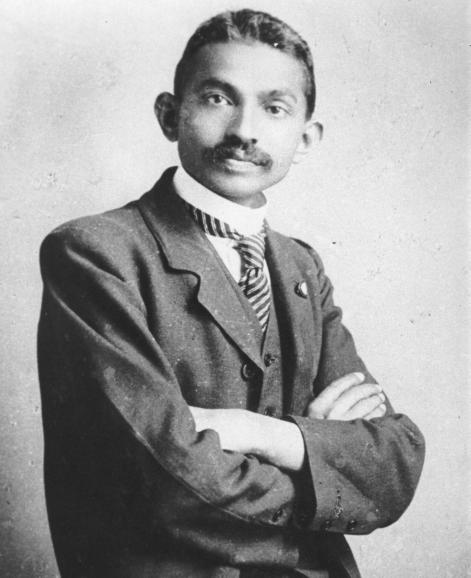A Definition of Satyagraha
by Metta Center for Nonviolence
By the year 1908 Gandhi realized that he needed a new term for the new force he was introducing into politics. “Passive resistance” was misleading, and nonviolence, the direct translation of the ancient Sanskrit term ahimsa was not yet in vogue (that would come some twenty years later). He held a contest and sadagraha or ‘clinging to the Real’ was selected, but then modified for grammatical reasons to Satyagraha. The great benefit of this term lay in the deep meaning of ‘satya’ in Indian languages: not just ‘true’ as opposed to false, but also ‘real’ as opposed to unreal (see his famous definition at the end of this article), and ‘good’ as opposed to harmful.

the term satyagraha; photographer unknown.
The term Satyagraha is used in two senses: it can stand for the entire principle of nonviolence, or the active and resistant dimension of it, as opposed to mere petitioning or constructive program.
In addition, we speak of individual campaigns as the Salt Satyagraha, the Temple Road Satyagraha, or we could coin the Budrus Satyagraha in Palestine today. The struggle for civil rights by various groups today, such as the GBLTQ community, women’s rights, indigenous autonomy struggles all contain essential elements of Satyagraha in so far as they are nonviolent and attempt to “speak truth to power.”
Satyagraha is sometimes contrasted with its opposite duragraha ‘clinging to the bad’, which implies the use of coercion or force. The ultimate aim of Satyagraha is always to bring parties closer together, and so in one’s ‘clinging to truth’ one prefers persuasion to coercion wherever possible.
Here is Gandhi’s famous testimony to the primacy of Satyagraha: “The world rests upon the bedrock of satya or truth. Asatya meaning untruth also means non-existent, and satya or truth also means that which is. If untruth does not so much as exist, its victory is out of the question. And truth being that which is can never be destroyed. This is the doctrine of Satyagraha in a nutshell.”
EDITOR’S NOTE: The Metta Center for Nonviolence has graciously allowed us to post this helpful definition, found on their site. Metta Center’s stated Purpose is “ . . . to promote the transition to a nonviolent future by making the logic, history, and yet-unexplored potential of nonviolence available to activists and agents of cultural change (which ultimately includes all of us). We help practitioners use nonviolence more safely and effectively, and anyone interested to understand and articulate it more fully.”




